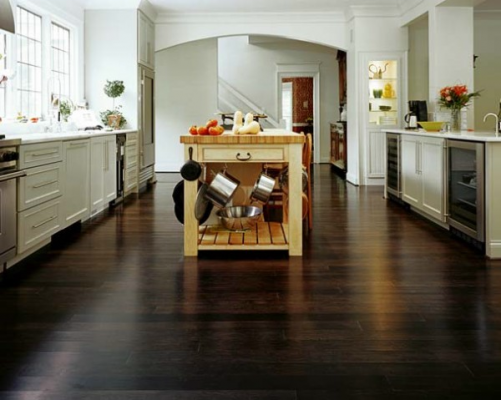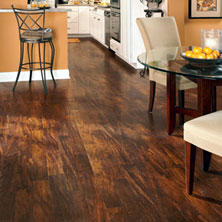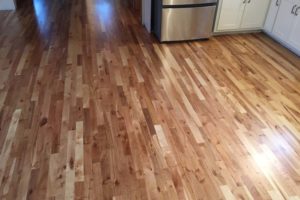Kitchens are tricky places for flooring, especially when they have a direct line to your dining room or living room. You want to have a nice, cohesive look extending from one room to the next, but the soft, luxurious carpet you have in your living room that’s perfect for warming your toes during an evening movie isn’t going to hold up to spaghetti sauce and oil splatter in your kitchen. What kind of flooring can stand up to the wetness, wear and tear that your kitchen can dish out but still look similarly attractive as the rest of your house? Here are a few choices:
- Vinyl
This is the 21st century, people. Vinyl is not just that rolled linoleum-looking beige stuff with the mustard colored designs and a weird bumpy texture. Vinyl can come is all ranges of textures, colors, and styles; from the wood- like planks to the retro and vintage styled tile. You can add “grout lines” to your tile look, medallions to your wood look, or boarders to any style you like. Vinyl will hold up to the water, wear, and heat usually seen in a kitchen as well as provide an even transition from one room to the next. This is not your mother’s vinyl!
2. Tile
Tile is a tried and true method of keeping the floor in your kitchen resistant to the wear and tear of a kitchen. The moisture in a kitchen won’t affect a tile floor so for young families who are a bit messy or a house with pets, this is a great option. Tile won’t scratch like wood, vinyl, or laminate will, however, it will be much cooler to your bare feet.
3. Wood
Wood is the easiest transition between rooms as the living room and dining room might already have wood installed. Wood floors are very popular right now as well so if you’re looking for the resale value, wood is the way to go. That being said, softer wood may dent or scratch with the foot traffic and large water spills may damage the floor faster than a vinyl or tile floor.








